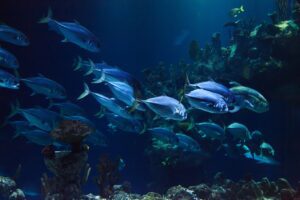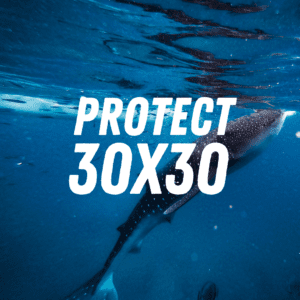Although World Ocean Day is officially celebrated on and around 8 June, the ocean needs protecting all year round – and there are plenty of opportunities to stay engaged! Read on to learn about a major issue where you can make a big impact with less than 10 minutes of your time!
Action Guide for the High Seas Treaty

The “High Seas” refers to the vast part of our ocean which lies outside of any country’s jurisdiction and is unprotected and vulnerable to exploitation. This great global common is critical to the health of the entire ocean, our planet, and for our own health. We all need a healthy ocean to survive and thrive, no matter where we live.
In 2023 global leaders made a major commitment to our ocean by agreeing to a High Seas Treaty, also known as the BBNJ (Biodiversity of Areas Beyond National Jurisdiction) which was agreed on and adopted at the United Nations as of 19 June. If ratified and enforced, the Treaty will significantly help move the planet closer to the international target to protect at least 30% of our lands, waters, and ocean by 2030 (30×30).


The High Seas Treaty could significantly improve that! The Treaty addresses four main issue areas, including MPAs (Marine Protected Areas) and environmental impact assessments. It sets out a new governance framework and clear process on how to establish MPAs in the High Seas, which is critical to achieve 30×30. It also gives nations around the world, including developing coastal and landlocked countries, a greater say in the treaty by making fair rules for sharing the benefits of new scientific discoveries in the high seas, which includes assisting developing countries with research funding and the transfer of technology.
While our global leaders adopted the Treaty during a United Nations convening, it will mean nothing unless at least 60 countries ratify it through their own domestic legal processes, and once that happens the global agreement will become international law. The sooner we push our respective countries to act, the sooner the High Seas will be protected!
That is where you come in! You can make a significant impact in as little as 10 minutes. Check out this Action Guide for more guidance. You can also follow the High Seas Treaty Ratification Tracker to see who has signed and ratified the treaty in real time! Ask Leaders to Ratify the High Seas Treaty Now!
To learn more about the next steps in the High Seas Treaty and how young people around the world can get involved, watch this webinar hosted by two youth leaders: ‘The High Seas Treaty: A Youth Perspective’.

